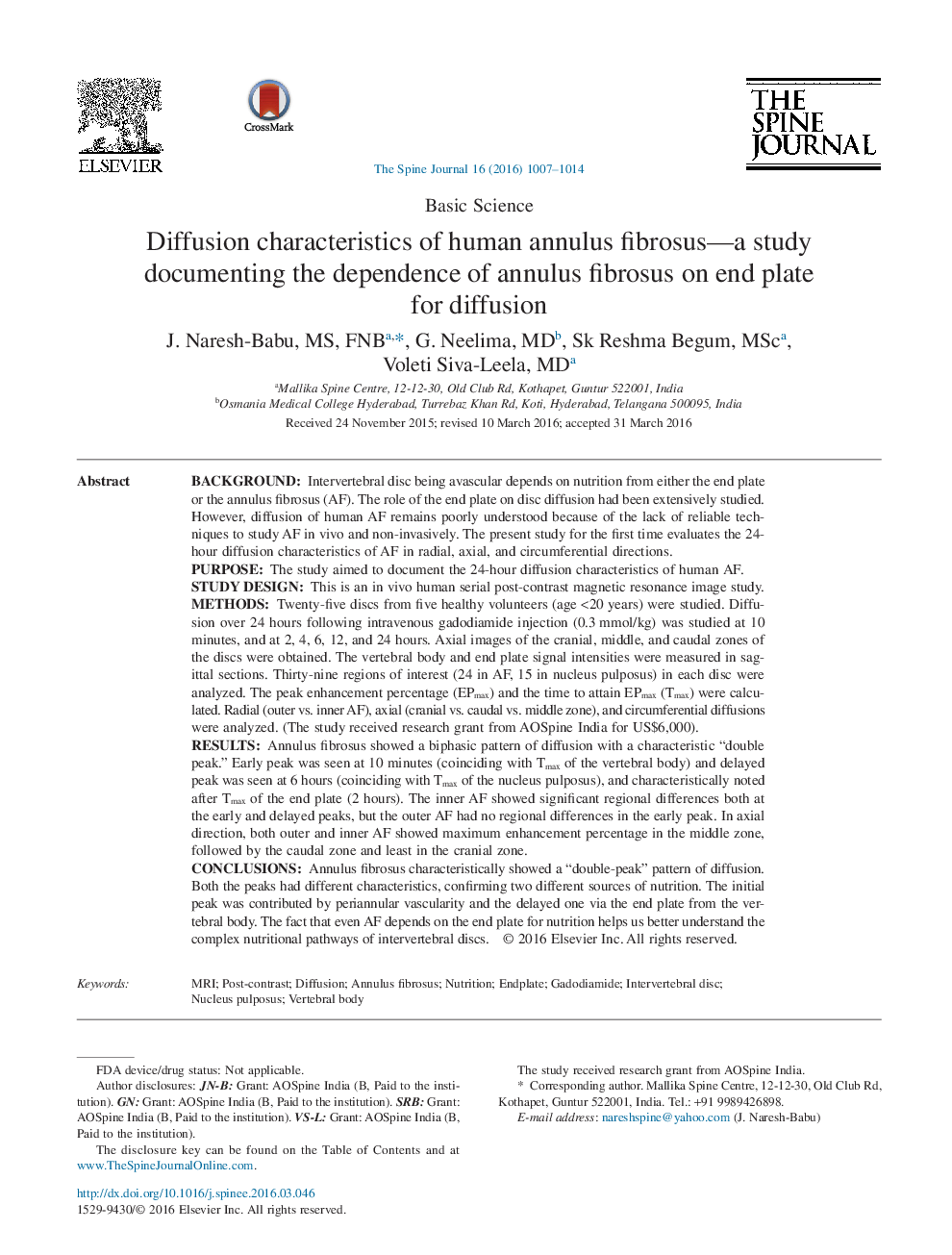| کد مقاله | کد نشریه | سال انتشار | مقاله انگلیسی | نسخه تمام متن |
|---|---|---|---|---|
| 4095799 | 1268547 | 2016 | 8 صفحه PDF | دانلود رایگان |
BackgroundIntervertebral disc being avascular depends on nutrition from either the end plate or the annulus fibrosus (AF). The role of the end plate on disc diffusion had been extensively studied. However, diffusion of human AF remains poorly understood because of the lack of reliable techniques to study AF in vivo and non-invasively. The present study for the first time evaluates the 24-hour diffusion characteristics of AF in radial, axial, and circumferential directions.PurposeThe study aimed to document the 24-hour diffusion characteristics of human AF.Study DesignThis is an in vivo human serial post-contrast magnetic resonance image study.MethodsTwenty-five discs from five healthy volunteers (age <20 years) were studied. Diffusion over 24 hours following intravenous gadodiamide injection (0.3 mmol/kg) was studied at 10 minutes, and at 2, 4, 6, 12, and 24 hours. Axial images of the cranial, middle, and caudal zones of the discs were obtained. The vertebral body and end plate signal intensities were measured in sagittal sections. Thirty-nine regions of interest (24 in AF, 15 in nucleus pulposus) in each disc were analyzed. The peak enhancement percentage (EPmax) and the time to attain EPmax (Tmax) were calculated. Radial (outer vs. inner AF), axial (cranial vs. caudal vs. middle zone), and circumferential diffusions were analyzed. (The study received research grant from AOSpine India for US$6,000).ResultsAnnulus fibrosus showed a biphasic pattern of diffusion with a characteristic “double peak.” Early peak was seen at 10 minutes (coinciding with Tmax of the vertebral body) and delayed peak was seen at 6 hours (coinciding with Tmax of the nucleus pulposus), and characteristically noted after Tmax of the end plate (2 hours). The inner AF showed significant regional differences both at the early and delayed peaks, but the outer AF had no regional differences in the early peak. In axial direction, both outer and inner AF showed maximum enhancement percentage in the middle zone, followed by the caudal zone and least in the cranial zone.ConclusionsAnnulus fibrosus characteristically showed a “double-peak” pattern of diffusion. Both the peaks had different characteristics, confirming two different sources of nutrition. The initial peak was contributed by periannular vascularity and the delayed one via the end plate from the vertebral body. The fact that even AF depends on the end plate for nutrition helps us better understand the complex nutritional pathways of intervertebral discs.
Journal: The Spine Journal - Volume 16, Issue 8, August 2016, Pages 1007–1014
